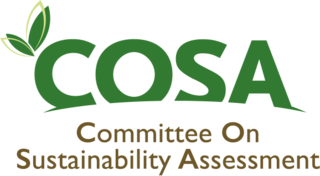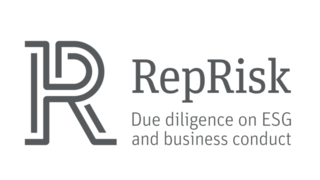Governance is the overall complex system or framework of processes, functions, structures, rules, laws and norms borne out of the relationships, interactions, power dynamics and communication within an organized group of individuals which not only sets the boundaries of acceptable conduct and practices of different actors of the group and controls their decision-making processes through the creation and enforcement of rules and guidelines, but also manages, allocates and mobilizes relevant resources and capacities of different members and sets the overall direction of the group in order to effectively address its specific collective needs, problems and challenges. The concept of governance can be applied to social, political or economic entities such as a state and its government, a governed territory, a society, a community, a social group, a formal or informal organization, a corporation, a non-governmental organization, a non-profit organization, a project team, a market, a network or even the global stage. Governance can also pertain to a specific sector of activities such as land, environment, health, internet, security, etc. The degree of formality in governance depends on the internal rules of a given entity and its external interactions with similar entities. As such, governance may take many forms, driven by many different motivations and with many different results.

Green building refers to both a structure and the application of processes that are environmentally responsible and resource-efficient throughout a building's life-cycle: from planning to design, construction, operation, maintenance, renovation, and demolition. This requires close cooperation of the contractor, the architects, the engineers, and the client at all project stages. The Green Building practice expands and complements the classical building design concerns of economy, utility, durability, and comfort. Green building also refers to saving resources to the maximum extent, including energy saving, land saving, water saving, material saving, etc., during the whole life cycle of the building, protecting the environment and reducing pollution, providing people with healthy, comfortable and efficient use of space, and being in harmony with nature. Buildings that live in harmony; green building technology focuses on low consumption, high efficiency, economy, environmental protection, integration and optimization.’
The Clean Development Mechanism (CDM) is a United Nations-run carbon offset scheme allowing countries to fund greenhouse gas emissions-reducing projects in other countries and claim the saved emissions as part of their own efforts to meet international emissions targets. It is one of the three Flexible Mechanisms defined in the Kyoto Protocol. The CDM, defined in Article 12 of the Protocol, was intended to assist non-Annex I countries achieve sustainable development and reduce their carbon footprints, and to assist Annex I countries achieve compliance with greenhouse gas emissions reduction commitments.

Social impact assessment (SIA) is a methodology to review the social effects of infrastructure projects and other development interventions. Although SIA is usually applied to planned interventions, the same techniques can be used to evaluate the social impact of unplanned events, for example, disasters, demographic change, and epidemics. SIA is important in applied anthropology, as its main goal is to deliver positive social outcomes and eliminate any possible negative or long term effects.
Sustainability reporting refers to the disclosure, whether voluntary, solicited, or required, of non-financial performance information to outsiders of the organization. Sustainability reporting deals with qualitative and quantitative information concerning environmental, social, economic and governance issues. These are the criteria often gathered under the acronym ESG.

The Global Reporting Initiative is an international independent standards organization that helps businesses, governments, and other organizations understand and communicate their impacts on issues such as climate change, human rights, and corruption.
Environmental flows describe the quantity, timing, and quality of water flows required to sustain freshwater and estuarine ecosystems and the human livelihoods and well being that depend on these ecosystems. In the Indian context river flows required for cultural and spiritual needs assumes significance. Through implementation of environmental flows, water managers strive to achieve a flow regime, or pattern, that provides for human uses and maintains the essential processes required to support healthy river ecosystems. Environmental flows do not necessarily require restoring the natural, pristine flow patterns that would occur absent human development, use, and diversion but, instead, are intended to produce a broader set of values and benefits from rivers than from management focused strictly on water supply, energy, recreation, or flood control.
An environmental audit is a type of evaluation intended to identify environmental compliance and management system implementation gaps, along with related corrective actions. In this way they perform an analogous (similar) function to financial audits. There are generally two different types of environmental audits: compliance audits and management systems audits. Compliance audits tend to be the primary type in the US or within US-based multinationals.
International Rivers is a nonprofit, nongovernmental, environmental, and human rights organization. Founded in 1985 by social and environmental activists, International Rivers works with policy and financial analysts, scientists, journalists, development specialists, and volunteers to combat the adverse effects of dams and their legacies that it has identified in over 60 countries.

Sustainability accounting originated in the 1970s and is considered a subcategory of financial accounting that focuses on the disclosure of non-financial information about a firm's performance to external stakeholders, such as capital holders, creditors, and other authorities. Sustainability accounting represents the activities that have a direct impact on society, environment, and economic performance of an organisation. Sustainability accounting in managerial accounting contrasts with financial accounting in that managerial accounting is used for internal decision making and the creation of new policies that will have an effect on the organisation's performance at economic, ecological, and social level. Sustainability accounting is often used to generate value creation within an organisation.
The water resources management system in Uruguay has been influenced by the general sense of water as an abundant resource in the country. Average annual rainfall is 1,182 mm, representing a contribution of 210 km3 annually throughout its territory. In 2002, the per capita renewable water resources was 41,065 cubic meters, way above the world average 8,467 m3 in 2006. Uruguay also shares one of the largest groundwater reserves in the world, the Guarani Aquifer, with Brazil, Argentina, Paraguay. The Guarani aquifer covers 1,200,000 square kilometers and has a storage capacity of 40,000 km3.
The International Hydropower Association (IHA) is an international lobby group and membership association representing the global hydropower sector.
Stakeholder engagement is the process by which an organization involves people who may be affected by the decisions it makes or can influence the implementation of its decisions. They may support or oppose the decisions, be influential in the organization or within the community in which it operates, hold relevant official positions or be affected in the long term.
Environmental governance (EG) consists of a system of laws, norms, rules, policies and practices that dictate how the board members of an environment related regulatory body should manage and oversee the affairs of any environment related regulatory body which is responsible for ensuring sustainability (sustainable development) and manage all human activities—political, social and economic. Environmental governance includes government, business and civil society, and emphasizes whole system management. To capture this diverse range of elements, environmental governance often employs alternative systems of governance, for example watershed-based management. Obviously, in fact the EG arrangements are very diversed and not at all as inclusive as we could wish them to be.
Environmental, social, and governance (ESG) is shorthand for an investing principle that prioritizes environmental issues, social issues, and corporate governance. Investing with ESG considerations is sometimes referred to as responsible investing or, in more proactive cases, impact investing.

The Committee on Sustainability Assessment (COSA) is a global consortium of development institutions that work collaboratively to advance sustainability learning with systematic and science-based measurement. COSA applies a pragmatic and collective approach for using scientific methods to develop indicators, tools, and technologies to measure the distinct social, environmental, and economic impacts and are applied in performance monitoring, evaluation, return on investment (ROI) calculation, and impact assessment. COSA has a public mission to open its scientific methods and metrics up to widespread use.

The United Nations Environment Programme Finance Initiative is a partnership between the United Nations Environment Program (UNEP) and the global financial sector to catalyse action across the financial system to align economies with sustainable development. As the UN partner for the finance sector, they convene financial institutions on a voluntary basis to work together with them, and each other, to find practical solutions to overcome the many sustainability challenges facing the world today. UNEP FI does this by providing practical guidance and tools which support institutions in the finance sector to find ways to reshape their businesses and commit to targets for limiting greenhouse gas emissions, protecting nature, promoting a circular economy and supporting financial inclusion to address inequality. The solutions developed effectively form a blueprint for others in the finance sector to tackle similar challenges and evolve their businesses along a sustainable pathway. The creation and adoption of such a blueprint also informs policy makers concerned with sustainability issues about what would constitute appropriate regulation for the finance sector at large. Founded in 1992, UNEP FI was the first organisation to pioneer engagement with the finance sector around sustainability. The Finance Initiative was responsible for incubating the Principles for Responsible Investment and for the development and implementation of UNEP FI’s Principles for Responsible Banking and Principles for Sustainable Insurance as well as the UN-convened net-zero alliances. Today, UNEP FI provides sustainability leadership to more than 400 financial institutions, with assets of well over $80 trillion headquartered around the world.
Governance of hydropower in Scandinavia, and the implementation of hydropower projects, is controlled by self-organising networks, with an open decision making process. Scandinavia is one of the largest producers of hydropower in the world.

RepRisk AG is an environmental, social, and corporate governance (ESG) data science company based in Zurich, Switzerland, specializing in ESG and business-conduct risk research, and quantitative solutions.
Strategic environmental assessment (SEA) is a systematic decision support process aiming to ensure that environmental and possibly other sustainability aspects are considered effectively in policy, plan, and program making. In this context, following Fischer (2007) SEA may be seen as:







